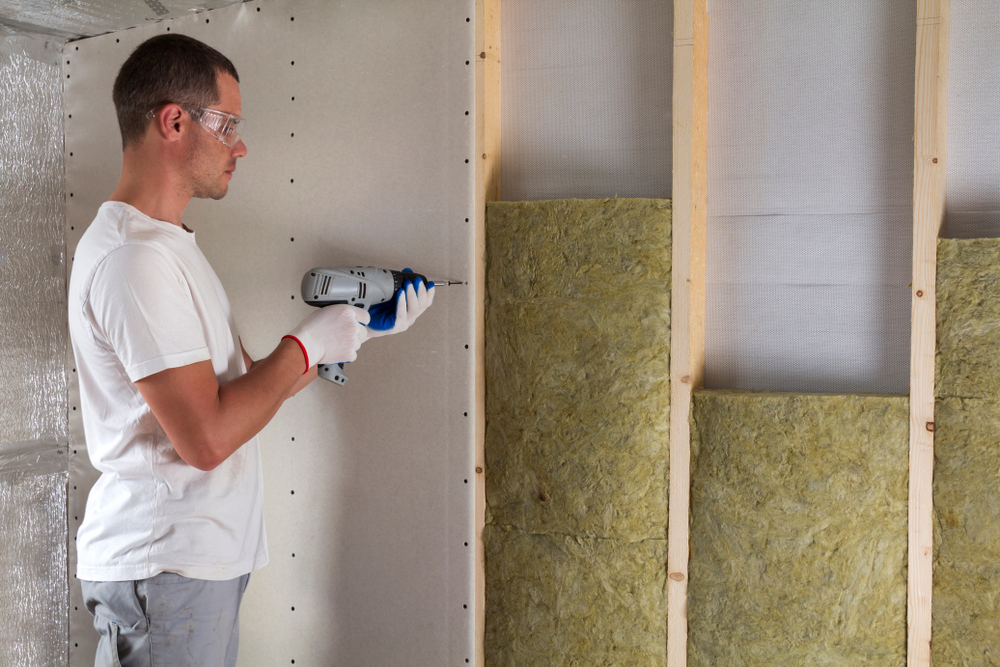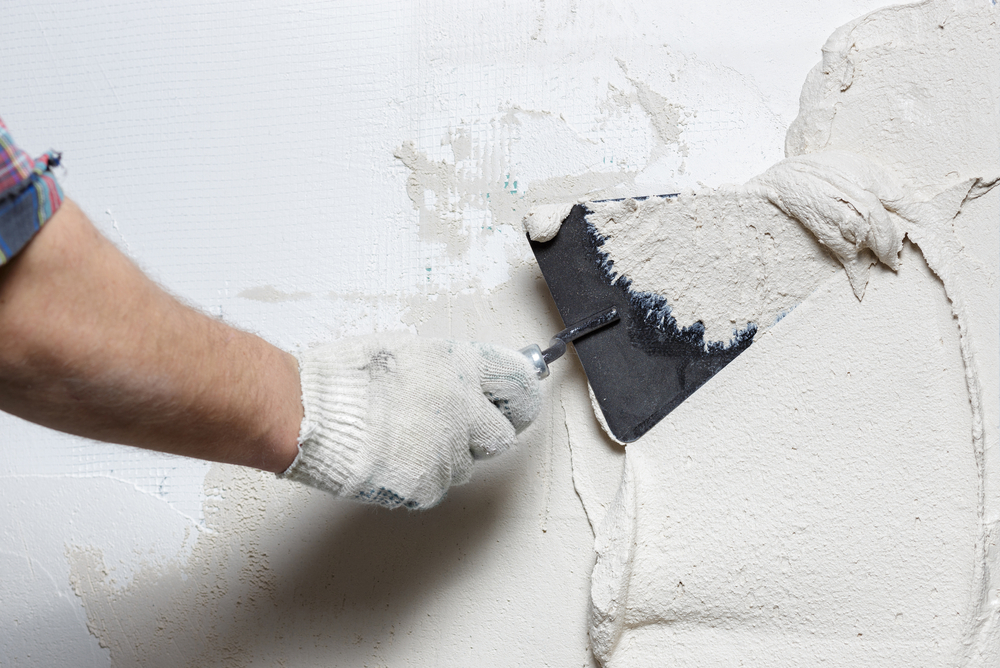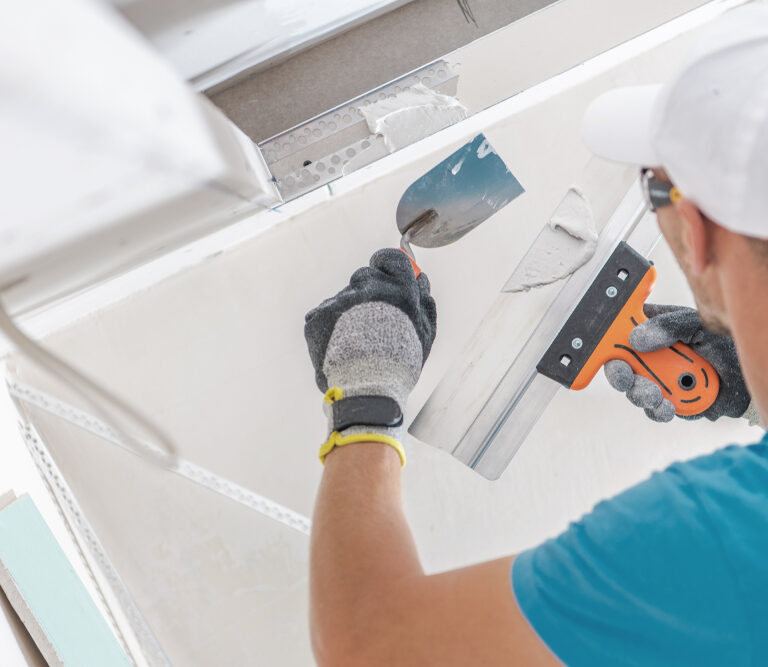When renovating a home, there are a million little decisions with big consequences that you never really had to think about before. One of the most important ones is the decision between plaster vs. drywall.
Each one offers unique benefits, so deciding between them comes down to budget, the climate where your home is, and other key factors. Learn more about the pros and cons of plaster and drywall below so you can decide which one makes the most sense in your home.
The Benefits of Drywall

Drywall is an increasingly popular option used by many builders because it offers a cheap, fast installation process and is more compatible with modern insulation materials. Keep reading for the main benefits of using drywall in your home!
Easy to Repair
When drywall gets damaged, it’s a breeze to simply cut out the damaged part and replace it with a fresh piece of drywall cut to the same size. This is not the case with plaster, where it’s difficult to isolate the damaged section and you end up needing to remove a much larger area.
The materials are also readily available at most home improvement stores so if the damage is minor, it’s realistic to just do it yourself over a weekend.
Less Expensive
Drywall is generally more affordable than plaster. The prefabricated gypsum panels themselves are about the same price as the equivalent amount of plaster. However, for professional installation, drywall is a fraction of the price. That’s because it’s much faster to install than plaster so you aren’t being billed for nearly as many hours. If you know you won’t be DIYing this step, drywall is definitely the more cost-effective option.
Easy to Hang Shelving and Frames
Drywall is a little softer than plaster, making it easier to drill screws into it for shelving or frames. Meanwhile, plaster is hard and brittle, and you likely won’t be able to do it without power tools.
For smaller homes where lots of hanging shelves are key to freeing up floor space, drywall will be much easier to work with as you put those finishing touches on your remodel.
Faster Installation
While it isn’t as straightforward a process as plastering, drywall is much faster to install. You don’t have to wait for successive coats of plaster to dry. You don’t have to spend nearly as much time sanding it down to an even surface.
If you’re flipping a house and on a time crunch, going for drywall can shave some time off your schedule to help you finish by your deadline.
Better Insulation
While plaster is thicker than drywall by itself, drywall allows for the best insulation. This is because it allows you to easily add layers of insulation material between the exterior and interior walls. This kind of layering isn’t really possible except with tricky (and expensive) workarounds.
The Drawbacks of Drywall
As affordable and fast as it is, the material does have some important drawbacks you should know before you place that bulk order for drywall boards. Here are some of the most important ones!
Difficult to Install on Your Own
In drywall installation, there’s a lot of measuring, cutting, mounting, and other tasks that require precision and good tools. If you don’t get each step right, the drywall won’t install properly.
With plaster, it’s just about mixing the plaster with water and spreading it over your walls. When it dries, sand the surface until it’s even. There’s less room for error.
In the end, it’s less of a headache to just pay professionals to get it done right. However, the cost of professional installation will eat into the money you’re saving by opting for drywall in the first place.
Less Durable
While it’s nice that drywall is easy to repair, it’s less nice that you’ll have to repair it more often. Whether it’s a mold infestation, a fire, or even just accidentally shoving the bed frame corner through your drywall while moving it upstairs, drywall is much more prone to damage than plaster.
Less Flexible
While plaster and drywall will both do just fine on standard, straight walls, things get tricky if you have any unusual nooks or uneven walls. For rounded rooms or curved corners, it will be difficult to cut drywall to a shape that will work. It doesn’t bend into shape and if you try to force it, the board will just break. Since plaster begins as a paste, it’s easy to just smooth it across walls of any angle or shape.
Less Fire-Resistant and Water-Resistant
Because drywall is generally more fragile than plaster, it won’t stand up nearly as well to fire or water. In case of fire, the flames will spread more easily across drywall than it would nonflammable plaster. In case of floods or burst water pipes, water damage will also spread a lot further than it could in plaster.
The Benefits of Plaster

Plaster has been the material of choice for decades and will often be found in older homes. The limestone or clay mixture is long-lasting, more durable, and gives your home a more authentic character. Here are some of the reasons people choose to plaster their walls.
Mold-Resistant
Plaster is limestone or clay based which means that microbes cannot grow on or in it. This makes it a great option for damp climates where mold is more likely to grow. Even those renovating homes in drier climates should probably opt for plaster in bathrooms, laundry rooms, basements, and other areas that are most at risk of water damage and mold.
Easy to DIY
For those who want to cut renovation costs by doing as much as possible on your own, plastering the walls yourself is definitely something you could do. It’s really just a matter of mixing up the plaster to the right consistency and then applying it to your walls with a trowel.
While there are no advanced techniques or equipment required, it does take a lot of time and you need to be pretty methodical to make sure you get a smooth, attractive result.
So, it’s easy in the sense that you don’t need to be a licensed professional to figure out how to do it, but there is still a lot of time and labor that goes into it. However, if you’re already planning to put a lot of your own sweat into this renovation, you might as well plaster the walls, too.
Easy to Clean
Plaster can be cleaned just as you clean any other hard surface. If you have a big spill, you can use wet sponges, lots of soapy water, and whatever else you need without worrying about water damage. Drywall will soak up water, soften, grow mold, and eventually need replacing if you use too much water when cleaning.
Not having to worry about that threat makes plaster a good choice for homes with children. If you know you’ll be scrubbing away your toddler’s impressionist murals in the hall or washing peanut butter hand prints off the dining room wall, you’ll be grateful for that easy-to-clean plaster surface.
Better Soundproofing
The limestone or clay material absorbs sound a lot better than drywall can. This makes it a better material wherever privacy or noise pollution might be a problem. For single-family homes, that level of soundproofing is not a high priority unless the home is in a noisier neighborhood.
For multi-family properties, on the other hand, it can mean the difference between happy tenants and angry ones. Even if you’re leaning toward drywall, you could still use plaster on any shared walls.
The Drawbacks of Plaster
While plaster has that classic look and incredible durability, it does make certain things, like adding insulation or hanging shelves, more difficult. Homeowners need to consider these drawbacks before they decide to go with plaster.
Requires More Paint
While it is mold-resistant, it is still porous so paint will soak right into it. You definitely need to use a primer and you’ll likely need to do 2-3 coats to get the shade you want. Be sure to factor this in when you’re ordering paint.
Difficult to Hang Things
Hammering nails into plaster for shelves or frames is a chore. If you’re strong, you might be able to do it manually. For the rest of us, it’s best to bring out the power tools. Even when using a drill, be sure you apply enough pressure to push the screw through the plaster quickly to avoid chipping the surface of your plaster.
For lighter objects like picture frames and other decorations, you can get around this by using wall-mounting tape. However, this usually won’t be strong enough for heavier items like book-laden shelves.
Repairs Are Expensive and Difficult
While it won’t need repairs or touching up as often as drywall, the repairs it does need will be expensive. It’s not as simple as just removing the damaged portion and patching it up. You usually have to cut out larger sections of the wall. Then, replaster that large section. Then, repaint.
More Expensive than Drywall
While the cost of the materials is more or less comparable between the two, professional installation is usually about three times more for plaster because it takes so much longer to complete.
You can get around this by plastering the walls yourself but if your renovation experience is limited, it’ll be tough to get a professional-quality result. As mentioned earlier, it doesn’t require any specialized skill. You just need a lot of patience and attention to detail.
Making the Decision
For homeowners renovating an existing home, the biggest deciding factor will likely be whatever is already there. If you’re renovating a historical house that’s already full of plastered walls, it’s usually easiest to just stick with plaster going forward. If you’re renovating a more modern construction that already has drywall, it will probably be easiest to just replace the damaged drywall and leave the rest intact.
For those who are building a new home from the ground up, you have more freedom to pick the one you prefer. From a budget standpoint, you’re already spending a lot on new construction so going for the more affordable drywall might make it easier to stay in your budget. From a DIY standpoint, plaster is a lot more amateur-friendly and cost-effective if you do it yourself.
Either way, make sure you’re investing the time and attention to detail to get this stage of construction done right. If you’re not doing it yourself, make sure you choose a contractor with the experience and credentials to do the job flawlessly.
